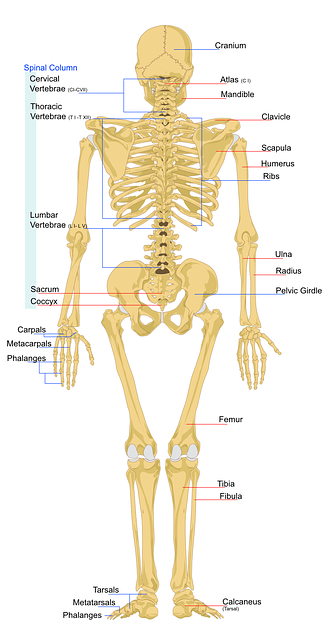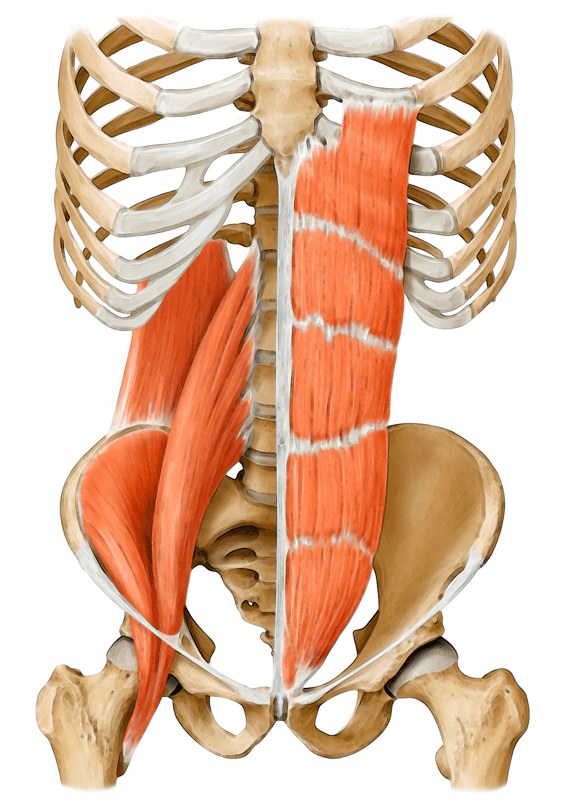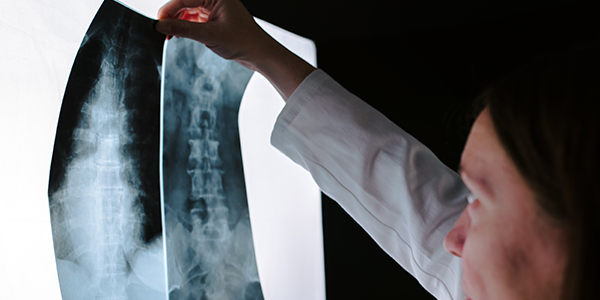Most acute low back pain results from injury to the muscles, ligaments, joints, or discs.
The body also reacts to injury by mobilizing an inflammatory healing response. And while inflammation may sound minor, it may go beyond nagging pain and can cause distinct “cancel my tee time” pain.
Have a conversation with almost any golfer and you’ll soon find that one of the most common injuries is lower back pain.
According to the National Golf Foundation data, 45% of golfers average more than 100 strokes per round.
This repetitive swinging of the club puts strain on the muscles supporting the spine (and the spine itself) which can cause episodes of acute lower back pain.
If not checked, this repetitive strain (along with other factors) can often lead to chronic lower back pain, hindering the ability to play and enjoy golf. Not to mention regular every day (or night) activities that may be hindered as a result of the sharp lower back pain.
So what do golfers do to ensure they can keep playing the game they love as pain-free as possible for many years?
We’ll get to that in just a minute, but first, you must understand a little more about the lower back…
The Anatomy of the Lumbar Spine…

The lumbar region of the spine, most commonly known as the lower back, consists of 5 vertebrae (L1 through L5).
The lumbar region is situated between the thoracic (chest) region of the spine and the sacrum.
It also typically has a slight inward curve known as lordosis.
The lower back region contains large muscles that support the back and allow for movement in the trunk of the body. These muscles can spasm or become strained, which is a common cause of lower back pain.
The five vertebrae of the lumbar spine are connected in the back by facet joints, which allow for forward and backward extension, as well as twisting movements. The two lowest segments in the lumbar spine, L5-S1 and L4-L5, carry the most weight and have the most movement, making the area prone to injury.
In between vertebrae are spinal discs, which cushion the joints of the spine and provide support. Discs in the lumbar region of the spine are most likely to herniate or degenerate, which can cause pain in the lower back, or even radiating pain to the legs and feet.
The spinal cord travels from the base of the skull to the joint at T12-L1, where the thoracic spine meets the lumbar spine. At this segment, nerve roots branch out from the spinal cord, forming the cauda equina.
Some lower back conditions may compress these nerve roots, resulting in pain that radiates to the lower extremities as well.
Why Exercise Is Crucial In Supporting The Lumbar Region…

The spine is like the mast on a ship.
The mast has all these ropes attached to it to help unload it so that it doesn’t fall over and crack.
Essentially the mast cannot support its own weight without the ropes.
The same is true with our spine.
Our spine can only support 35 lbs of axial pressure on it’s own.
That is why we rely on certain muscles attached to the spine, commonly known as your “core”, to take the pressure off.
When your core muscles are weak, imbalanced, or tight — instead of the muscles taking the pressure of your daily activities (or in a golfer’s case, repetitive swinging of the club on average over 100 times per round!) it is the spine that takes that pressure.
This can lead to a lot of wear and tear on the spine.
By making sure the muscles are strong it makes the spine a lot more durable.
So what do golfers do when they experience episodes of acute lower back pain?

Golfers have figured out that regaining strength in their core muscles is only one piece of the puzzle.
An even more effective strategy to help reduce or in some cases even eliminate lower back pain (when combined with strengthening the core muscles) is to increase flexibility.
The biggest role of flexibility in the golf swing is to prevent injury. Most injuries in golf (and even outside of golf) can be traced to a lack of flexibility.
Common areas are the back, hamstrings, shoulders, and neck.
When these areas of the body are stiff or have poor range of motion, and a golfer tries to swing a club at full-force, the muscles and tendons tighten causing painful injury.
So being flexible in these areas can help a golfer to reduce injury, increase balance, swing faster, and hit the ball farther.
At the end of the day, flexibility is the key that allows us to actually use the strength we already have… and it’s also what allows us to regain some of the strength we’ve lost over time.
So how does one become more flexible?
Most people would normally default to…
“Well, you have to stretch of course!”
And they would be right… for the most part.
The key is in doing a simple set of movements on a consistent basis. A combination of dynamic stretches, core stability exercises, mobility exercises, and a few others done in a specific sequence to retrain the muscles to reduce or even eliminate lower back pain… even if you’re not a golfer!
For best results, we recommend these routines be done for at least 15-30 minutes on an almost daily basis.

-Benjamin Arnold M.D.
Director of Performance
Golf Body Rx LLC
TPI Certified Lvl 1
TPI Certified Lvl 2
Who is Doctor Benjamin Arnold and Why Should You Listen To A Single Word He Has To Say?

Hi, my name is Benjamin Arnold, M.D. I’m a licensed physician, and received my MD from the University of Texas Medical Branch…
I’m also a passionate golfer.
I’ve been playing ever since I turned 5, when my dad and grandfather would take me out on the course.
Last of all, and perhaps most important, I’m a TPI-certified professional, certified in both Level One and TPI Medical 2.
Now, if you pay any attention to the world of golf, you’ll know TPI – the Titleist Performance Institute – is the gold standard when it comes to golf fitness instruction.
Butch Harmon put it best when he said: “If you’re in the business of coaching, physically training or medically evaluating golfers, TPI Certification should be mandatory.”
In fact, players advised by a TPI certified expert have:
Won 13 of the last 16 major championships…
Won 43 of the last 53 PGA Tour Events…
And include 25 of the top 35 players in the world.
The expertise I gained through TPI, along with my own medical background, has allowed me to help players of all ages and abilities – including many up in their 60s, 70s, and 80s – to reclaim their fitness, while adding power to their swings and yards to their drives.

